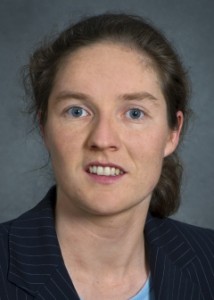Jan 16 2013
In the quest to produce an environmentally benign renewable fuel, scientists have explored many techniques to split water molecules to produce hydrogen. Still, the current photovoltaic designs are not yet technically or economically viable. Materials research in this area has been promising, but research on the engineering design of these photoelectrochemical systems has been sparse.
 Sophia Haussener
Sophia Haussener
To advance this part of the puzzle, a team including Lawrence Berkeley National Laboratory (Berkeley Lab) researchers Sophia Haussener and Adam Weber recently conducted design research at the Joint Center for Artificial Photosynthesis (JCAP) and published their results in Energy and Environmental Sciences. The team used a validated multi-physics numerical model to examine two photochemical water-splitting designs. Haussener is now at Ecole Polytechnique Federale, Lausanne, Switzerland.
The modeling revealed important information about the design impacts of these systems. For example, the use of transparent-conducting-oxide layers on top of the photoactive semiconductor resulted in smaller ohmic loss (voltage drop) across the cell. Ohmic losses were also reduced through smaller electrode lengths, larger electrolyte heights, and thinner separators. In addition, the research team found that electrolyte and product crossover, which limit the system’s ability to keep the split hydrogen and oxygen molecules from recombining, was determined by the system’s operational condition and pressure differentials over the system’s separators. The researchers concluded that controlling the morphology of the separator could potentially reduce this crossover and improve hydrogen yields. Further research is planned.
Other team members were Chengxiang Xiang, Joshua M. Spurgeon, and Nathan S. Lewis (of the Joint Center for Artificial Photosynthesis at the California Institute of Technology) and Shane Ardo (of the Beckman Institute and Kavli Nanoscience Institute).